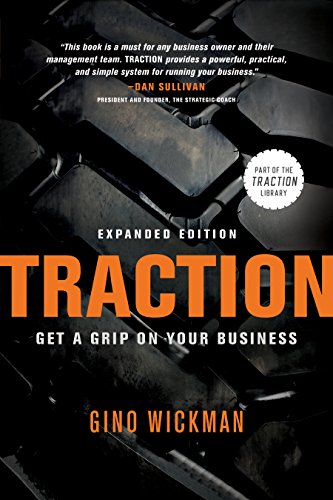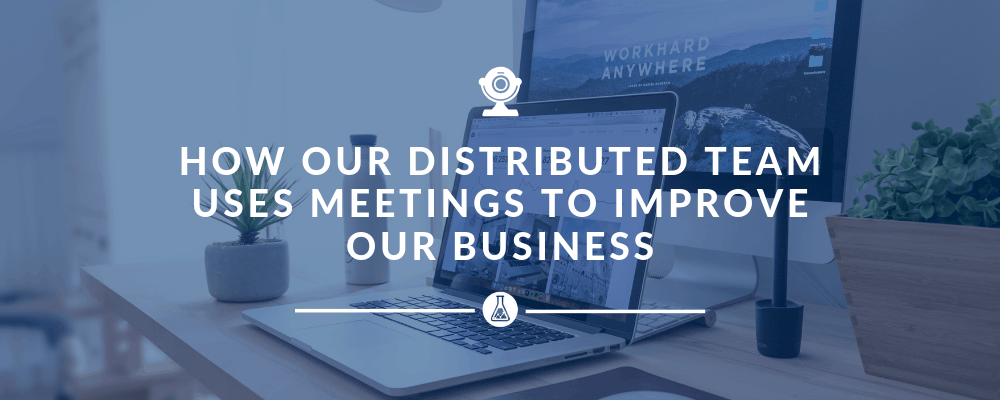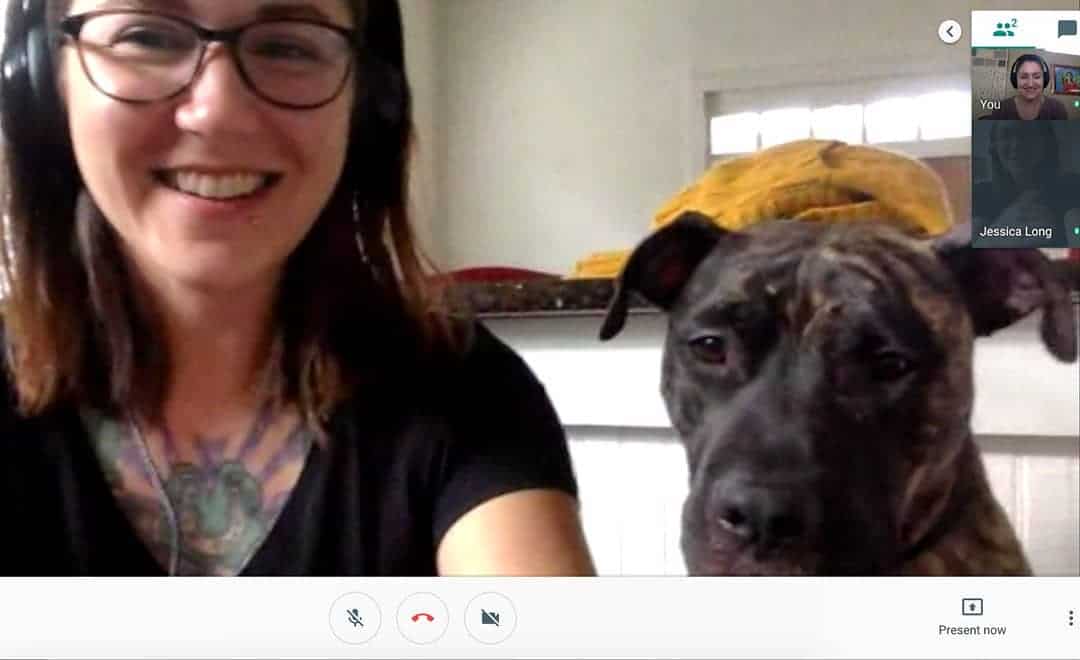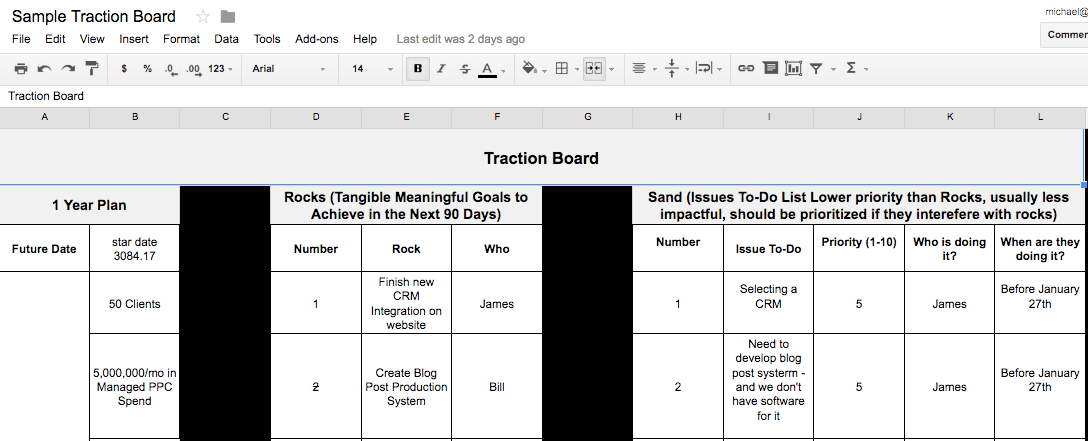Everyone has an opinion about meetings.
“Waste of time.”
“Couldn’t you have emailed me this?”
“Why is that person asking so many questions – do they want to be here forever?”
“I feel like my boss doesn’t even want to be here!”
The list goes on.
By and large, those opinions are justified. I believe that most workplaces don’t have productive meetings. And I know this because we used to have ineffective meetings ourselves.
A few years ago, I wrote a Linkedin post “How We Get Massive ROI from our Team Meetings.”
I thought it was pretty good. I called our meetings “PPC Science Meetups.” They involved round-robin experience-shares: “This week I learned how to improve Quality Score – here’s how (…).”
While I thought the meetings were effective at increasing our skills and tightening the bond between our team members, it failed at becoming a business habit.
Search Scientists is a partially remote team. Our agency’s main office is in Austin, and the rest of the team is distributed all across the world. What was missing were a few crucial elements to result in an actual change in the way we approach meetings as a distributed team.
This post shares how we’ve corrected course. Not only on the way we handle meetings – but the way we turn good ideas into habits and tangible goals.
All Credit Goes to Gino Wickman

Gino, if you’re reading this, you da man.
I think with any small business it’s easy to place focus only on the immediate. The default mode of operating is to have your energy pulled towards what is urgent in the present hour or week. The distinction is that something urgent now is not the same as important, growth-activities.
This difference between urgent vs. important, requires a business maturity, discipline, and organization to manage.
For me, it took reading Gino Wickman’s Traction several times to Get a Grip (see what I did there) on our meetings.
What I’m about to share in this post is what transpired over the course of several months of brainstorming with members of our distributed team. If you’ve read Traction, you’ll realize this was heavily inspired.
Reference: Gino’s Website / Gino’s GoodReads Author Page.
Effective Meeting Fundamentals for distributed teams
One of the missteps most make when jumping into meetings is a lack of fundamentals.
Here are some of the concepts we practice:
- Meetings must save time, not waste time
Meetings should help make the attendees more effective and efficient at what they do. If there isn’t a plan to save time, then don’t have the meeting.
Don’t make it a memo:
Meetings shouldn’t be one-way information delivery. If you just need to announce something, announce it in an email or video.
Early is on time + On time is late:
Nothing sucks the wind out of a distributed team’s meetings like people showing up late, only to discover their microphone doesn’t work. Get there 5 minutes early, every time, and make sure your tech works. Your dog can also join.
- Expectations and Meeting Rating:
Another concept I got from Gino Wickman. Spending 3 minutes to go around the virtual table sharing expectations for the meeting at the start. Finishing with rating the meeting on a scale of 1-10, and explaining why. We don’t always finish with a rating, but it can be a helpful tool.
- Honesty, Collaboration, and Team Growth:
Meetings are an opportunity to help team members grow in a supportive environment. Each element of honesty and support needs to be made visible and reminded of often. If team members are afraid to discuss opportunities for growth, then that’s a reflection of a bigger issue.
- Structure:
No one should spend a second of the meeting wondering what comes next.
- When in Doubt, List it out
If I could tl:dr this article, I would summarize issue handling as follows:
- Make a list
- Make a plan to complete items on that list
- Look at the list regularly to be sure you’re on pace to finish the item
- Rinse and repeat
The meeting structure we found that helps identify, isolate, and eliminate issues follows this plan.
Big Goals & Issues Solving
Smart people have told me that every objective needs a person in charge of it, as well as a deadline for completion. This meeting format helps facilitate this process.
It also has the power to center everyone around the vision and trajectory to push the company and the team forward.
Whether it’s built around a traction board, a regular Google document or an Asana board, this way of organizing tasks serves a few core roles:
- The one place per department to find the list of issues, big goals, and responsibilities
- Distills out all the problems of the company, prioritizes them, and sets a time frame for solving them
- Kills the “we only deal with immediate issues, instead of important ones.”
- Holds people accountable for doing what they say they will do (which is also our first principle)
• Yearly Tangibles And Vision
You can’t plan today if you don’t know where you’ll be in 12 months. At the start of the year, you’ll want to sit with your team to discuss where you all want to grow over the next 12 months.
Plan for your ideal month. What metrics are humming along? What systems will you build that will allow the distributed team to do their best work? Get ambitious. This is fun.
This gets completed when you first start these meetings.
• Rocks
The example of why they’re called “rocks” and not “goals” is discussed with an analogy from Gino Wickman:
Pretend you had to fill up a jar with rocks and sand. If you filled it with the small things (sand) first, you would have no room for the big things (rocks).
In business, most people focus on the small things that scream, “Complete me! I’m immediate, you can fix it right away.” But the sand is never that important in the grand scheme of things. By definition, it’s small.
What effective organizations do is to plan to accomplish the large, important, often difficult challenges in addition to the immediate fixes. They also make sure the immediate fixes build towards larger, more impactful areas.
Each rock is simply defined as an important business accomplishment that will need to be completed to achieve the yearly goals.
The rocks are each assigned to one specific person to avoid confusion about who is ultimately responsible for getting it done.
• Sand
Now, the sand is still important. You can’t completely fill a jar with only rocks. You need to do the small steps to accomplish large goals.
The sand area is referred to as the “issues” or “to-do” list. These are the immediate fix-its that need to be completed for the business of day-to-day.
Following a similar process:
- Prioritize
- Delegate
- Deadline
Again, we’re looking to get into a habit of accountability and slow and steady improvement. To act as an assistant to GTD your issues.
This running list is the central section where the distributed team discusses each issue.
The 5+60 Minute Flow
Following the exact same routine each week may seem monotonous at first. You may also laugh at first when it comes time to set expectations or rate the meeting. I’ve found that the sooner you can get over this, and take the exercises seriously – your effectiveness will skyrocket.
The sections of the meeting:
Introduction & Expectations:
Introduce the meeting. Go round-robin around the virtual table and ask what everyone’s expectation is. Sample answers may be:
“I really want to solve this one issue I’m having with this campaign” or “I hope to hear more about Andreea’s research into our new CRM”
Scorecard Rundown:
In this section, you should open up your KPI chart. Whatever your company or department uses to keep track of important metrics. You want to go through an unemotional review of these numbers. Make these top of mind. Business is more than “feelings”. Your KPI chart should remind you of the important areas of your business.
Sample:
- Bill: Accounts over KPI: Target: 80% / Current Score: 95%
- Bobby: Client Churn Percentage: Target 5% / Current Score: 4.4%
There is no discussion or comments here, you’re just reviewing data. Individuals can take notes to bring up any issues during a later section.
Rock Rundown:
In this section, you repeat the same unemotional, announcement-style rundown. You point out each rock, and simply ask: are we on or off course to complete by end of quarter?
“Completion of new CRM project: On or off course Andreea?” “On-course.”
Sand Issue Discussion:
Now, it comes time to discuss, dig in, and solve. We found that following a simple procedure helps us:
- Identify: What is the issue and how do we know it’s an issue?
- Prioritize: After you’ve added all the issues on the list, it’s time to prioritize. If you have a large team, take the average of everyone’s priority vote.
- Discuss & Solve: Select your highest priority issue, and discuss a solution.
- Delegate: Who will be in charge of the solution?
- Deadline: When will that person have this issue solved?
How many issues should you handle? As many as you can discuss and solve within 60 minutes.
Conclude:
Recap who will do what by the next weekly meeting.
Optionally, rate the meeting (although we highly recommend it): Scale of 1-10 and why.
Why 5+60?
The meeting should start on time, which means everyone needs to show up in the software 5 minutes before the scheduled time.
There is nothing that sucks the wind out of a meeting’s momentum and excitement than starting late because someone’s Google Hangouts or Skype is bugging.
Starting on time and ending on time is crucial for a serious meeting.
Who Has Weekly Meetings Together?
Some of our sample meetings:
CEO + Operations And Client Success
Karolina and Bobby communicate multiple times a day. It allows them to stay on top of the numbers that matter.
They discuss operations-based metrics: churn, retention, campaigns on or off KPI targets, campaign growing or shrinking, and campaign manager performance. They also find time to discuss growth-related ideas: new strategies, new procedures, PPC news, improvements, and so on.
Sample:
“It looks like when a lead requests a proposal, they’re not getting the welcome-email. This is a level 10 issue. What can we do to solve it?”
“I can ask Jessica in Sales if she can run a few tests with our CRM, contact support, and implement the solution they mention. I can get this done before the next meeting”
Operations And Client Success + Campaign Managers & Campaign Optimizers (The Operations Team)
This is the nitty-gritty of campaign management and optimization. Here, the team identifies snags in campaigns, brainstorms improvement and collaborates on best courses of action.
We encourage team members to come to the meeting with an issue or hurdle they’ve been experiencing. The “time saving” element of this meeting is getting direct, clear feedback from the rest of the Scientists. Sample:
“One issue I’m having this week is getting my client’s campaign to 7x ROI. They’re an e-commerce store selling lamps. The Shopping Ads are converting at 8x, but the search text ads are converting at 5x.”
“Okay, have you done search query analysis for the winning keywords from Shopping Ads and used those in the cold traffic search text ads?”
“Oh, I haven’t had a chance yet, that’s a great idea, I’ll get that done by next meeting.”
CEO + Operations And Client Success + Sales & Marketing
Traction Meetings are done once a week. Our sales and marketing team have an important role. They’re usually the first thing people see, hear, watch, or talk to when people interact with our company. Ensuring that the marketing we do for ourselves is as effective as the marketing we do on behalf of our clients is a big part of what empowers our sales & marketing.
Turning Meetings into Action
There is something funny about human psychology. You can carve out a meeting each week. You can write long 2,500-word blog posts on the topic.
But after the meeting, there is a very likely chance you go back to your old habits. It can take weeks – if not months – to try and accomplish a new habit. Behavior change is difficult.
I’ve always been a believer in using technology to compensate for the failings of human willpower.
Step 1: Have the Meeting
Simply having the meeting as described is the first step. It’s very tempting to throw away a format like this in exchange for an ad hoc “What do you feel like talking about?” meeting. While it might feel better at first to have an unstructured meeting – I assure you it’s not effective at hitting longer-term important rocks.
Step 2: Believe it Works
One of my favorite books is SuperBetter by Jane McGonigal.
The book discusses the ways that video games can act as an active source of stress relief.
She talks about a study where:
- One group played video games just to play them, without given any instruction.
- Another group played video games with the idea that video game related to stress relief already works; they were just going to measure how much stress relief they experienced.
- The result? You guessed it. The group who had the assumption that videogames were an effective means of stress reduction had stress reduction. The other group didn’t – because they didn’t expect it to work.
Getting a distributed team involved and on board with a new initiative is challenging. Reinforcing the positive benefits of this structure is vital to its success.
Step 3: When in Doubt, Write it Out
We use Asana as our project management tool of choice.
Immediately after each meeting, head over to Asana and write down the issues or rocks assigned to you.
Step 4: Block Time from Your Calendar to Complete
Writing down time to complete the issues is a necessary part of this equation.
Step 5: Remember it Takes Months for Behavior Change
You’re inevitably going to get a diffusion of innovators.
- Innovator: The few people who want to change the way you do meetings and set up this system. These people will also suggest new ideas for improvement.
- Early Adopters: People that love the meetings from the onset.
- Majority: The Majority of people will take their time and slowly adopt and adapt to the new meeting.
- Laggards: The people resist change for the sake of resisting change.
Step 6: The Magic is Real
It’s always been hard to corral everyone in a distributed environment. I often tell people: “Man, I sometimes wish we were all in the same room to have a whiteboard and look at it together every morning.”
These traction boards/lists are our whiteboards. They’re the one place where we write down our issues and goals.
The real magic is happening.
This meeting format helps build accountability. There is no longer a question of who is solving what issue, and by when.
Accountability leads to empowerment. Being able to take ownership of our work is something most people look for in a workplace.
It gives everyone a structured format to identify and discuss both short-term and long-term improvements to the company and for our clients.
Steady improvement over time. What is business other than a march towards getting better and better? Doubly true in the field of online marketing.
Perhaps my favorite indirect outcome of this meeting flow is that it hits so many key questions that a great distributed team should be asking themselves.
- Do I know what is expected of me?
- Do I have the tools needed to do my work right?
- Do I have the opportunity to do what I do best every day?
- In the last seven days, has someone praised me for my work?
- Do the team leaders seem to care about me as a person?
Making the work environment a more enjoyable place for everyone to do their best work has always been a priority for us. Answering “yes” to those questions above is a byproduct of this meeting structure.
I encourage you to pick up the book Traction and take this meeting format for a spin.
It’s been unbelievable for our company, and we’re only just getting started.




